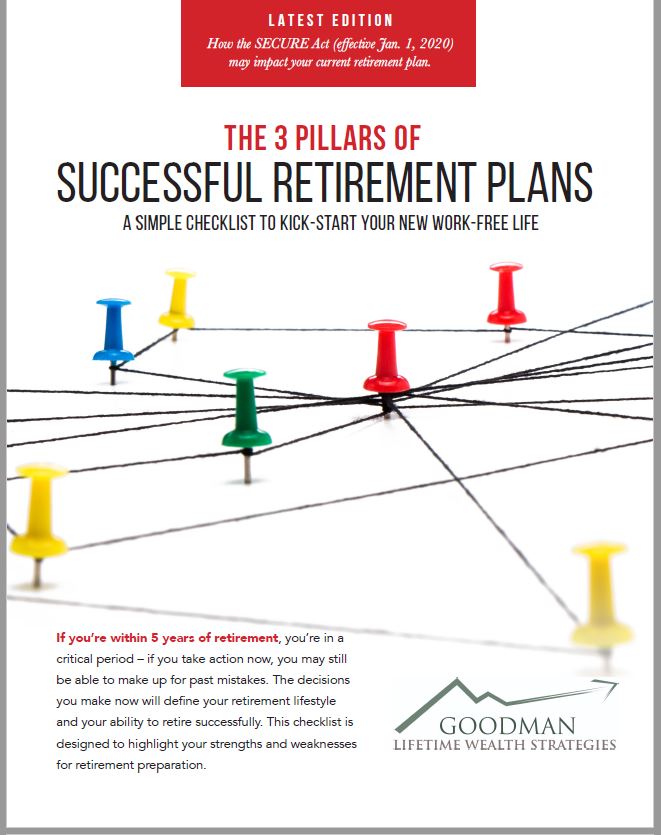We have 2 open to the community presentations this month!
Saturday Aug 13th, 11am at the Las Vegas Review Journal Aging Wellness Expo
Adam Goodman is a featured speaker and will be presenting “Planning Your Retirement Income in Ways That Are Best For You and Strategies For Navigating Stock Market Volatility.”
Wednesday August 24th, 11am-12pm Sahara West Library
Goodman Lifetime Wealth Services will be giving a rare open to the public seminar on “Solutions for Successfully Navigating Stock Market Volatility Throughout Retirement”
Adam Goodman will share his strategies on planning to and through retirement, investment ideas, sequence of return risk, and the problems with a 70/30 portfolio!
Space is limited, must RSVP in advance! PLEASE RSVP TO ATTEND BY CLICKING HERE!
In this month’s recap: Stocks surge on receding inflation and recession worries, and better-than-expected second-quarter earnings.
U.S. Markets
Stocks posted big numbers in July, erasing some of their first-half losses. Investor sentiment was lifted by receding inflation and recession worries and a better-than-expected start to the second quarter earnings season.
The Dow Jones Industrial Average gained 6.73 percent, while the Standard & Poor’s 500 Index rose 9.11 percent. The Nasdaq Composite led, picking up 12.35 percent.1
Hopeful Signs
Stocks have been under pressure all year from rising inflation and slowing economic growth. There weren’t many signs in July that suggested either inflation had cooled or that the economy was rebounding. Nevertheless, investors saw falling energy prices and persistent strength in the labor market as hopeful signs that any economic downturn may not be as severe as some expect.
Earnings Help Rally
Investor sentiment improved further as earnings season got underway in the back half of the month. This gathering optimism was not a result of exceptional earnings results. Rising enthusiasm was perhaps more attributable to the fact that earnings were not nearly as weak as many had feared. Companies painted a picture of a reasonably healthy consumer and businesses effectively navigating their inflation and supply chain challenges.
Big Week of Data
The month of July culminated in perhaps the most critical week of the summer for the market, with investors awaiting information on corporate earnings, a Fed meeting decision on interest rates, and the release of an initial estimate of the second quarter GDP.
Sector Scorecard
All 11 sectors posted gains for the month, including Communications Services (+3.87 percent), Consumer Discretionary (+18.44 percent), Consumer Staples (+3.20 percent), Financials (+7.19 percent), Health Care (+3.24 percent), Industrials (+9.50 percent), Materials (+6.15 percent), Real Estate (+8.52 percent), Energy (+9.66 percent), Technology (+13.45 percent), and Utilities (+5.45 percent).2
What Investors May Be Talking About in August
Historically, August has been positive for stocks, with an average return of 0.7 percent for the month. August also has more positive monthly performances (55) than negative (39).3
But August is also known for unexpected national and world events that have moved the markets in unexpected ways. Events that have occurred in August include the Asian currency crisis in 1997, the Long-Term Capital Management collapse in 1998, the downgrade of U.S. debt in 2011, and China’s currency crisis in 2015.
During the month, the government will release a string of economic reports to give the Fed fresh insight into the economy for its late September meeting. After September, the Fed only has two scheduled meetings for the rest of 2022—one in early November and one in mid-December.
World Markets
Overseas markets rallied following the lead of the U.S. markets. The MSCI-EAFE Index gained 3.74 percent last month.4
Similar to U.S. markets, major European markets overcame growing recession fears and deepening energy woes. France picked up 8.87 percent, Italy rose 5.71 percent, Germany 5.48 percent, and the U.K. tacked on 3.54 percent.5
Pacific Rim markets were mostly higher, except for Hong Kong, which lost 7.79 percent. Australia gained 5.74 percent and Japan climbed 5.34 percent.6
Indicators
Gross Domestic Product: The economy shrank at an annualized rate of 0.9 percent in the second quarter as consumer spending moderated and businesses reduced inventories. GDP posted its second straight quarter of negative growth, meeting the technical definition of a recession. Unlike most recessions, however, the past two quarters have been marked by strong employer hiring.7
Employment: Non-farm payrolls increased by 372,000 in June, with the unemployment rate unchanged at 3.6 percent. Wages increased 5.1 percent year-over-year.8
Retail Sales: Retail sales rose 1.0 percent in June, beating consensus estimates.9
Industrial Production: Industrial production declined 0.2 percent in June, though it was higher by 6.1 percent in the second quarter.10
Housing: Housing starts slipped 2.0 percent as rising prices and mortgage rates weighed on buyer demand. It was the second consecutive month of declines.11
Existing home sales fell 5.4 percent, while the median sales price climbed 13.4 percent to another record high of $416,000.12
New home sales declined 8.1 percent in June, falling to levels not seen since April 2020. Year-over-year sales were down 17.4 percent.13
Consumer Price Index: Prices of consumer goods and services climbed 1.3 percent in June. The 12-month increase was 9.1 percent, a 40+ year high. Core inflation (excluding volatile food and energy prices) remained elevated as well, rising 0.7 percent from May’s levels and 5.9 percent from a year ago.14
Durable Goods Orders: Orders for products designed to last three years or more rose 1.9 percent. When excluding defense spending, durable goods orders were up a more modest 0.4 percent.15
The Fed
Fed officials agreed to a 0.75 percentage point hike in the federal funds rate, acknowledging that the economy has slowed since the Federal Open Market Committee in June.16
In a post-meeting press conference Fed Chair Powell said that future rate hikes would be made on a meeting-by-meeting basis and that it may become appropriate to slow the pace of future interest rate hikes.16
| MARKET INDEX | Y-T-D CHANGE | July 2022 |
| DJIA | -9.61% | 6.73% |
| NASDAQ | -20.80% | 12.35% |
| S&P 500 | -13.34% | 9.11% |
| BOND YIELD | Y-T-D | June 2022 |
| 10 YR TREASURY | 1.13% | 2.64% |
Sources: Yahoo Finance, July 31, 2022.
The market indexes discussed are unmanaged and generally considered representative of their respective markets. Individuals cannot directly invest in unmanaged indexes. Past performance does not guarantee future results. U.S. Treasury Notes are guaranteed by the federal government as to the timely payment of principal and interest. However, if you sell a Treasury Note prior to maturity, it may be worth more or less than the original price paid.



Leave a Reply